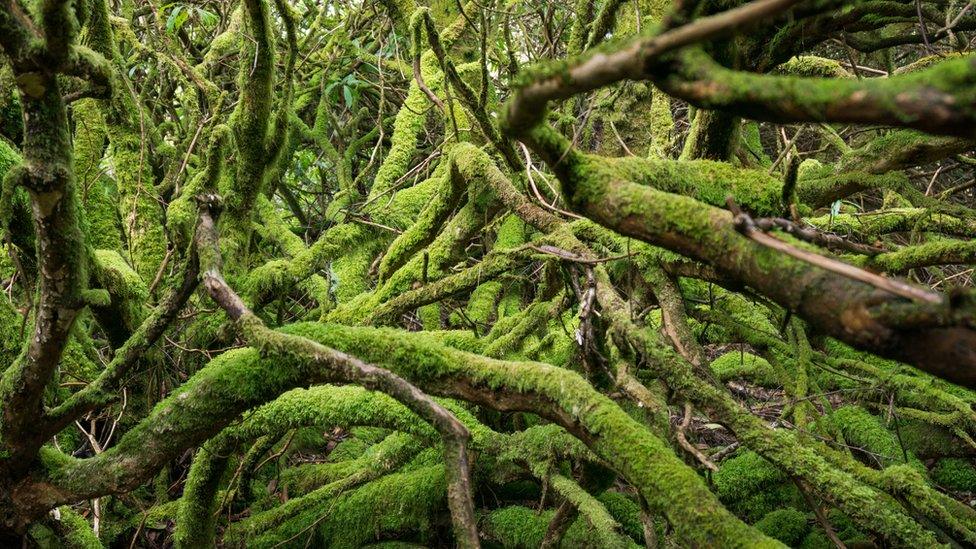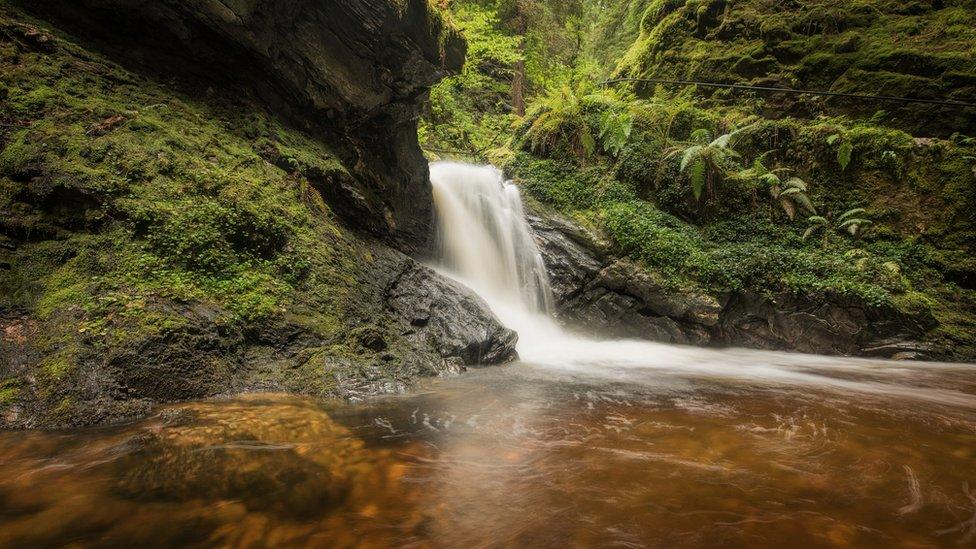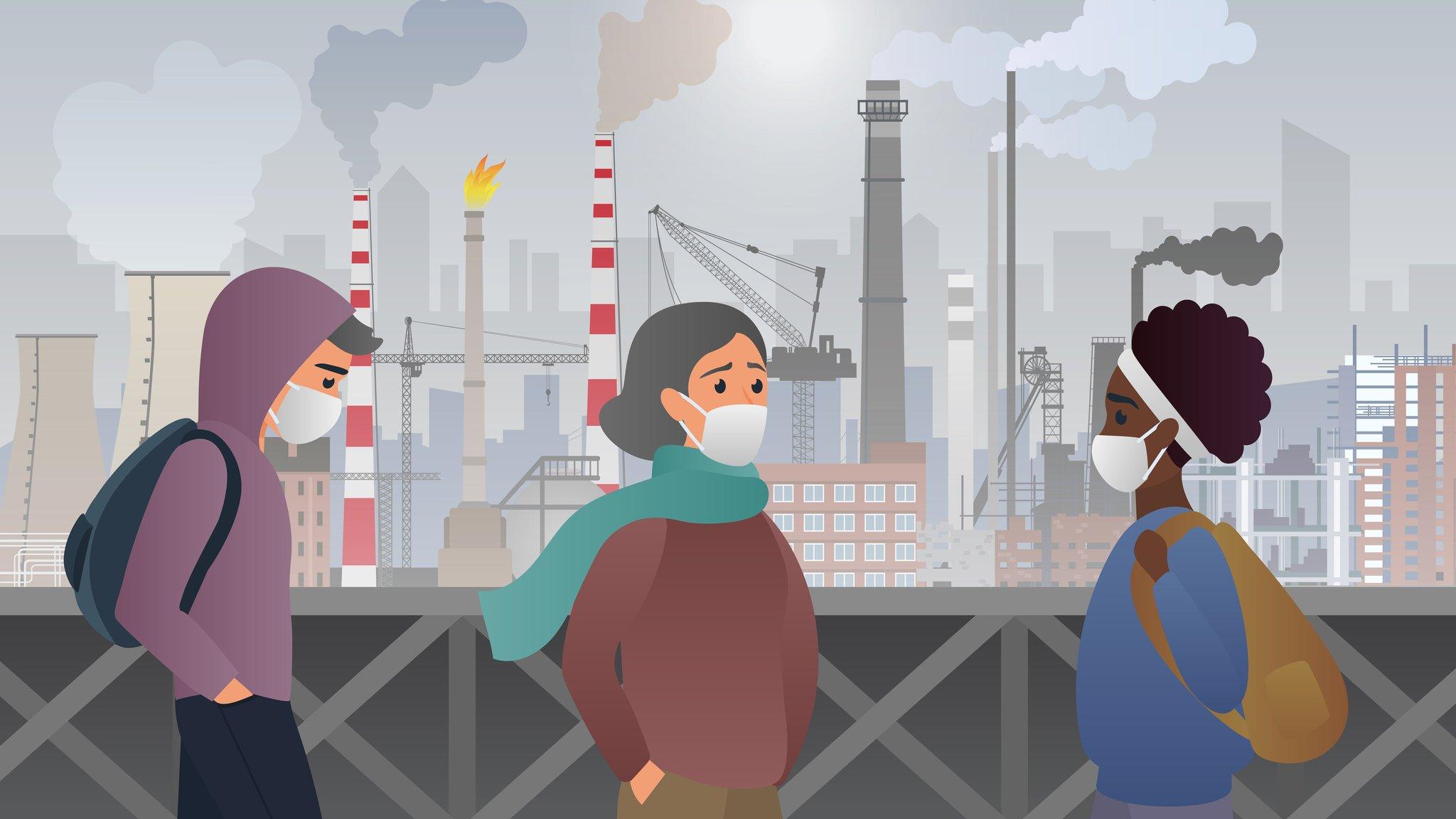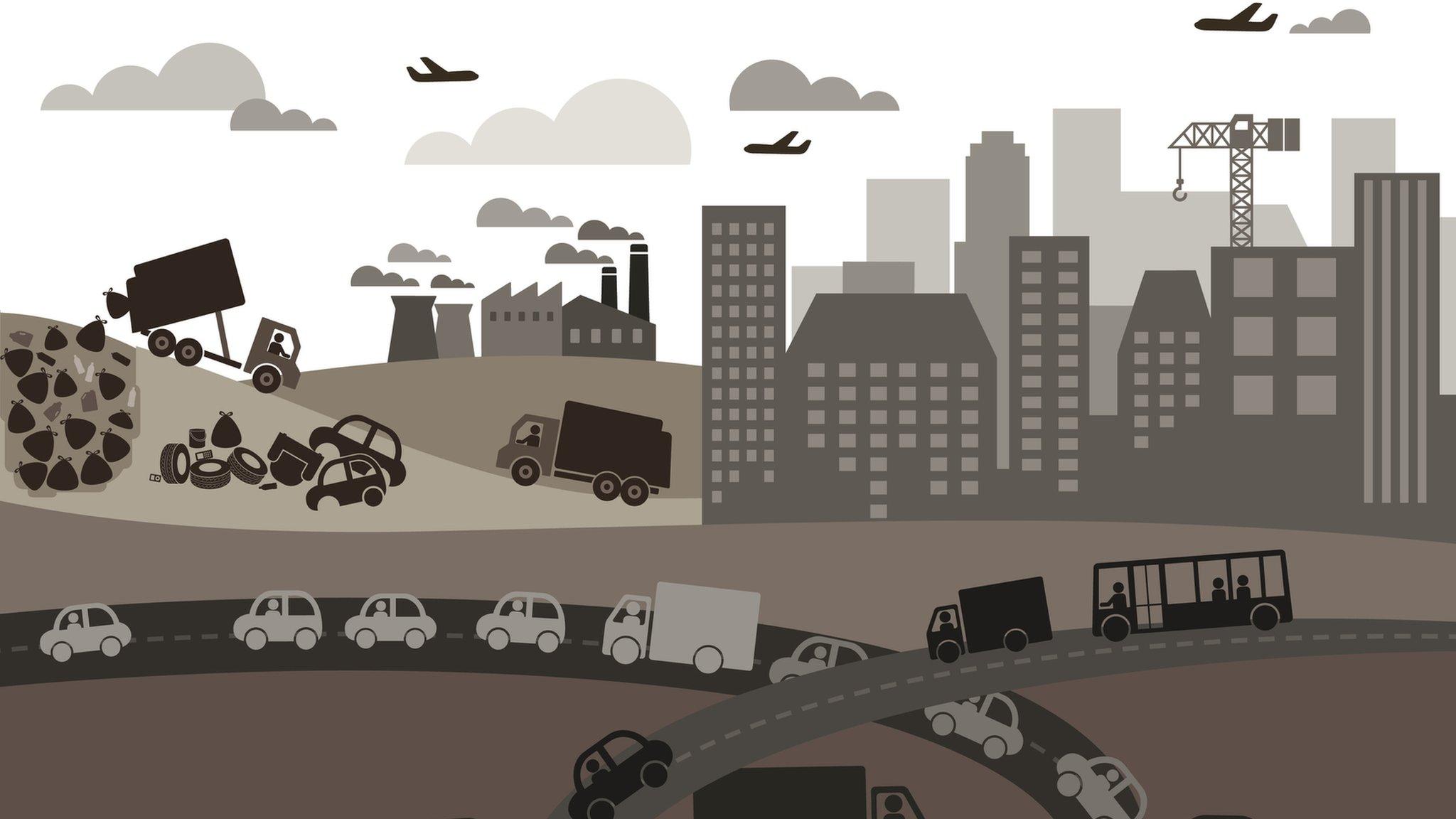Air pollution threatens Scottish wildlife, report finds
- Published
- comments
WATCH: What's air pollution and why's it so important?
A report for the Scottish government conducted by Plantlife Scotland has found that air pollution is "silently wreaking havoc" on Scottish wildlife.
It's threatening rare rainforests, peatlands and grasslands as well as harming the country's important species, habitats and biodiversity.
High levels of the harmful gas, nitrogen, has been found in the country's mountaintops, in just under half of the wood habitats and a quarter of open habitats within Scotland's Important Plant Areas.
The researchers said fungi, lichen and plant diversity is also at risk.
What is air pollution?

The fumes given off by vehicles affect air quality
Air pollution is a term that describes the harmful gases and particles in the air. We can't always see these substances as many are invisible to the human eye, but they affect the quality of the air around us and this can be very damaging to both human health and the environment.
Vehicles including cars, buses, trucks and motorcycles all emit air pollutants. They can also be given off by planes and trains and at factories and power plants where fossil fuels like coal, oil and gas are burned.
Cigarette smoke, the burning of wood for heating and cooking, and farming all contribute to air pollution too.
Common air pollutants include:
sulphur dioxide
nitrogen dioxide
carbon monoxide
ozone
What's happening in Scotland?

Plantlife Scotland found that more than a third of all Scotland's nitrogen-sensitive habitats and 80 percent of its land within Special Areas of Conservation have "intolerable nitrogen levels" - this means the habitats are unable to cope with the high amount of nitrogen which reduces their ability to grow and thrive.
The increased nitrogen in the air is caused by road transport, power stations, farming and industry. And even though these activities might seem far away from the tops of mountains, the harmful gases can travel.
Alistair Whyte, head of Plantlife Scotland said: "Alarmingly, we are now finding that habitats perceived to be furthest away from the source of air pollution, such as the unique rainforests of the west coast, are on the borderline of reaching their nitrogen thresholds" from emissions from far away.
As well as leading to a loss of species, air pollution makes it harder for habitats to be protected from the impacts of climate change and also increases their vulnerability to pests and disease.
Nitrogen...is...rapidly devastating our iconic habitats and the impacts of this...are still not being recognised with sufficient urgency.

Fast-growing "thuggish plants" such as nettles thrive in the acidic nitrogen-rich soils and are threatening to take over Scotland's ancient, rare and endangered wild plants, lichen and fungi. This is taking place across the country's rare rainforest, grasslands, woodlands and mountains.
According to the Woodland Trust, 30,000 hectares of rainforest remain in Scotland. It's regarded as one of the most important rainforests in Europe for its significant species. It's under threat from not just air pollution, but overgrazing by deer and sheep, the impacts of climate change and diseases such as ash dieback.
The scientists also revealed that nitrogen oxide emissions have declined but are still a significant source of pollution affecting the country's wildlife.
Talking about the report, Mr Whyte offered some hope by adding, "it's not too late to halt this. There are huge opportunities for conservationists, agriculture and Scottish government to work together".
The Scottish government is working on ways to reduce air pollution and harmful emissions under its review of the Cleaner Air for Scotland plan which was published in 2015.
- Published30 April 2020

- Published7 February 2019

- Published14 January 2019

